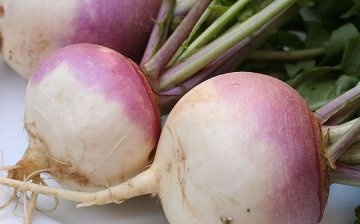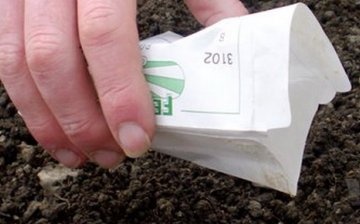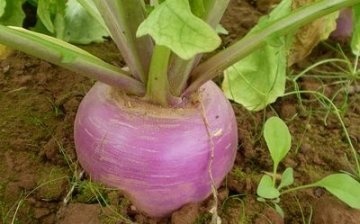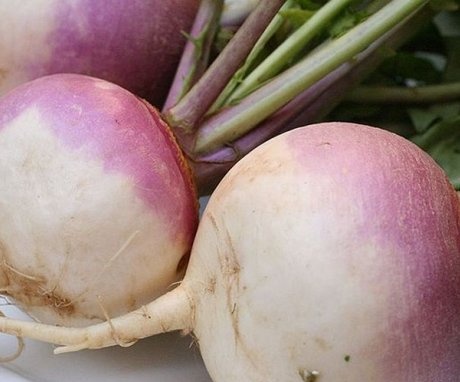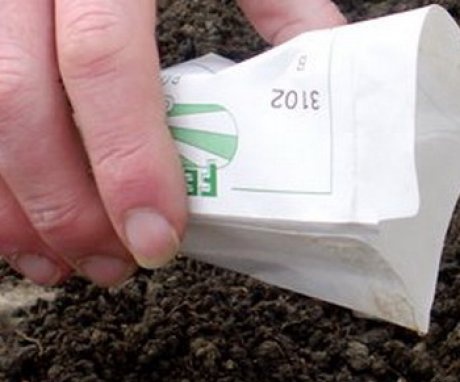Forage turnips: tips for growing and care
In modern cuisine, potatoes are considered "second bread". In pre-Petrine times, when nothing was known about this vegetable, the role of the main product was assigned to fodder turnips.
Content:
- Forage turnip: what kind of vegetable is it?
- Features of growing turnips
- How to care for turnips in the garden?
Forage turnip: what kind of vegetable is it?
Representative of the Cruciferous family. By its properties resembles a carrot or fodder beets... A thickened, fleshy root vegetable forms in the first year of life. Its appearance (color, shape) is a distinctive feature of different varieties. There are round, oval, cylindrical fruits. The palette ranges from neutral to purple.
Root turnip is a biennial cruciferous plant that has been a popular dish with the majority of the population in the past.
The next season, seeds are obtained from the planted mothers. When the turnip sprouts from seed, its wide, short cotyledons emerge from the ground and take on a greenish tinge. Since most of the root crop sticks out of the soil, it can be easily pulled out.
Turnip seedlings are easy to distinguish from carrot and beet seedlings by their appearance. The aerial part of the plant is a rosette of large, spirally arranged leaves with petioles. A fluff is visible on a flaky plate with an expanded tip. On branched peduncles, triangular-shaped leaves are alternately placed. The inflorescence is a panicle. The fruit is a pod. Inside it ripens about 20 spherical, brown seeds. Weight of 1000 pieces - from 2500 to 3500 mg.
Features of growing turnips
The vegetable is very profitable to cultivate. Its advantage is the rapid ripening of the fruit. For their collection, they are accepted already 60-70 days after the first shoots appeared. That is why, in good weather, it is possible to get 2 crops per season from one site.
The culture will like light, fertile soil, neutral or slightly acidic.
Forbidden to use in fresh manure as fertilizer... Adding lime or ash will lower the acidity value. Land fed with organic matter a few years ago will do.
Growing a vegetable in two stages, you can feast on it constantly. In the summer, root crops of spring planting are used. Since the plant is not afraid of frost (up to -20 C), the planting material is sown in early May. Planting early will allow you to taste the crispy flesh as early as possible.
Vegetables harvested in the fall are suitable for storage. To use turnips in winter, they are planted in the middle of summer. The culture will grow well in the area where it was planted in front of it cucumbers, onion, tomatoes or potato.
Sowing forage turnip:
- In the spring, before starting work, water the selected area without sparing water.
- Level the soil.
- Sapa draw grooves (depth not more than 1.5 cm), maintaining a distance of about 20 cm.
- Put pre-soaked seeds (half an hour in warm water) in piles of 3-4 pieces every 0.1 m.
- Sprinkle with earth gently. Small planting material should not be deeply buried.
- Cover the grooves with a non-woven material.
When the sprouts have 3 true leaves, the area is watered with slurry and the excess plants are pulled out. To cook turnip dishes not only in summer, but also in winter, you need to grow it in 2 stages.
How to care for turnips in the garden?
The harvest will be bountiful with due attention to culture. Basic care measures:
- Sufficient watering.If there is little moisture, the fruits grow slowly, their taste decreases. Bitterness, a pungent aroma appears. Hot, dry summers need 20-30 liters of water per 1 m2. Watering is especially important after sprouting and during fruit formation.
- Loosening the soil. Provides oxygen supply. They work after the plants have been watered. They act carefully so as not to injure the turnip.
- Dense shoots are thinned out.
- Protection against cruciferous (earthen) flea beetles. This pest is especially dangerous for early and late shoots. Prevention consists in pollination of the soil mustard, pepper, ash or tobacco dust just before sowing.
- Top dressing is optional. If there is a desire to fertilize turnips, apply complex mineral dressings. They stimulate active growth, additionally protect the plant from parasites, fungi and viruses.
- I harvest the "winter" crop before the frost. Vegetables will lie for a long time if you cut off the tops near the root crop without damaging the flesh. Turnips are placed in boxes or paper bags, stored at a temperature of 2-30C. Between the layers of turnips, 2-4 cm of sand are poured.
When growing forage turnips, special attention is paid to timely, abundant watering and loosening of the soil.
Turnip is a completely unfair product that has been neglected lately. A variety of dishes are prepared from it, consumed raw, boiled, stewed and even salted.
More information about the properties of turnips can be found in the video.




